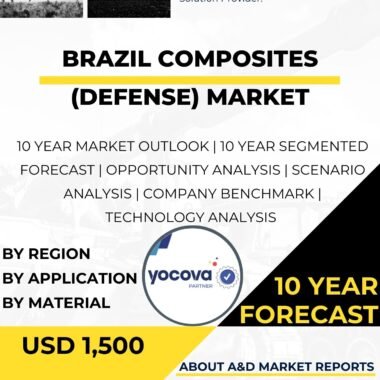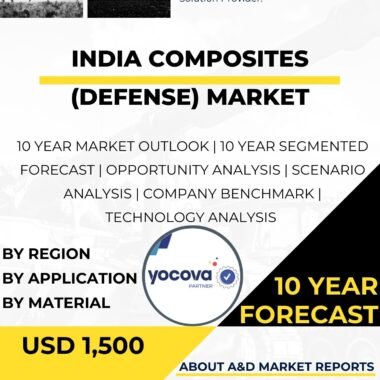Description
The Canadian defense armor material market plays a crucial role in ensuring the safety and protection of military personnel, vehicles, and equipment. Armor materials are essential components in various defense applications, ranging from body armor for soldiers to protective plating for combat vehicles and naval vessels. The market for defense armor materials in Canada is driven by the need to keep up with technological advancements, enhance military capabilities, and safeguard national security.
The Canadian defense armor material market is characterized by a diverse range of materials that offer different levels of protection and performance. Traditional materials such as steel and aluminum alloys have been used for decades and continue to be relevant in certain applications due to their cost-effectiveness and reliability. However, with evolving threats and the demand for lightweight, high-strength solutions, the market has witnessed a significant shift towards advanced composite materials and ceramics.
Composite materials, which consist of two or more constituents with distinct properties, are favored for their superior strength-to-weight ratio and versatility. Fiber-reinforced composites, such as aramid fibers (e.g., Kevlar) and ultra-high molecular weight polyethylene (UHMWPE) fibers, are widely used in body armor and personal protective equipment (PPE). These materials offer exceptional resistance to ballistic impacts and fragmentation while being lightweight and flexible, providing soldiers with enhanced mobility and agility.
In addition to personal protection, composite materials are extensively employed in armored vehicle applications. They are used in the construction of vehicle panels and spall liners to mitigate the effects of explosions and ballistic threats. Advanced ceramic materials, like boron carbide and alumina, are often integrated with composite structures to create hybrid armor systems with improved multi-hit capabilities and reduced weight compared to all-metal alternatives.
The Canadian defense armor material market also focuses on research and development to push the boundaries of innovation. Nanotechnology is a rapidly growing field with promising implications for armor materials. Nanostructured materials, such as carbon nanotubes and graphene, exhibit exceptional mechanical properties and are being explored to enhance the performance of defense armor.
Canada collaborates with various research institutions, defense contractors, and academic partners to develop and deploy cutting-edge armor solutions. The Canadian government provides funding and grants to support research projects aimed at improving armor materials’ performance, cost-effectiveness, and sustainability.
Furthermore, the market for defense armor materials in Canada is influenced by the changing nature of modern warfare. Asymmetric threats, including improvised explosive devices (IEDs) and rocket-propelled grenades (RPGs), have led to the development of specialized reactive armor technologies. Reactive armor systems consist of explosive tiles that detonate upon impact, neutralizing incoming threats before they can penetrate the main armor.
In recent years, additive manufacturing, commonly known as 3D printing, has also emerged as a disruptive technology in the defense armor material market. It enables the production of complex geometries and customized armor components, reducing lead times and costs while optimizing material usage. This technology offers greater design flexibility and supports rapid prototyping, allowing for iterative improvements in armor materials.
Maintaining a secure and robust naval fleet is another critical aspect of Canada’s defense strategy. The country’s naval vessels require advanced armor materials to protect against potential threats, including anti-ship missiles and small arms fire. Steel plating and specialized composite materials are employed in ship hulls and critical compartments to ensure survivability and mission success.
In addition to developing advanced armor materials, Canada places great importance on the proper testing and certification of such materials. Rigorous testing standards are enforced to ensure that defense armor materials meet the necessary performance criteria and adhere to international safety standards.
As the global geopolitical landscape evolves, the Canadian defense armor material market faces both challenges and opportunities. The rise of cyber warfare and drone technology has prompted the need for innovative solutions to protect against new threats. As such, the integration of advanced sensors and electronic countermeasures into armor systems is gaining traction.
In conclusion, the Canadian defense armor material market is a dynamic and diverse sector, continuously adapting to emerging threats and technological advancements. Traditional materials like steel and aluminum alloys coexist with advanced composites, ceramics, nanomaterials, and reactive armor systems to cater to a wide range of defense applications. Collaborations with research institutions and industry partners, along with investments in R&D, ensure that Canada remains at the forefront of armor material innovation to safeguard its military personnel and assets effectively.




